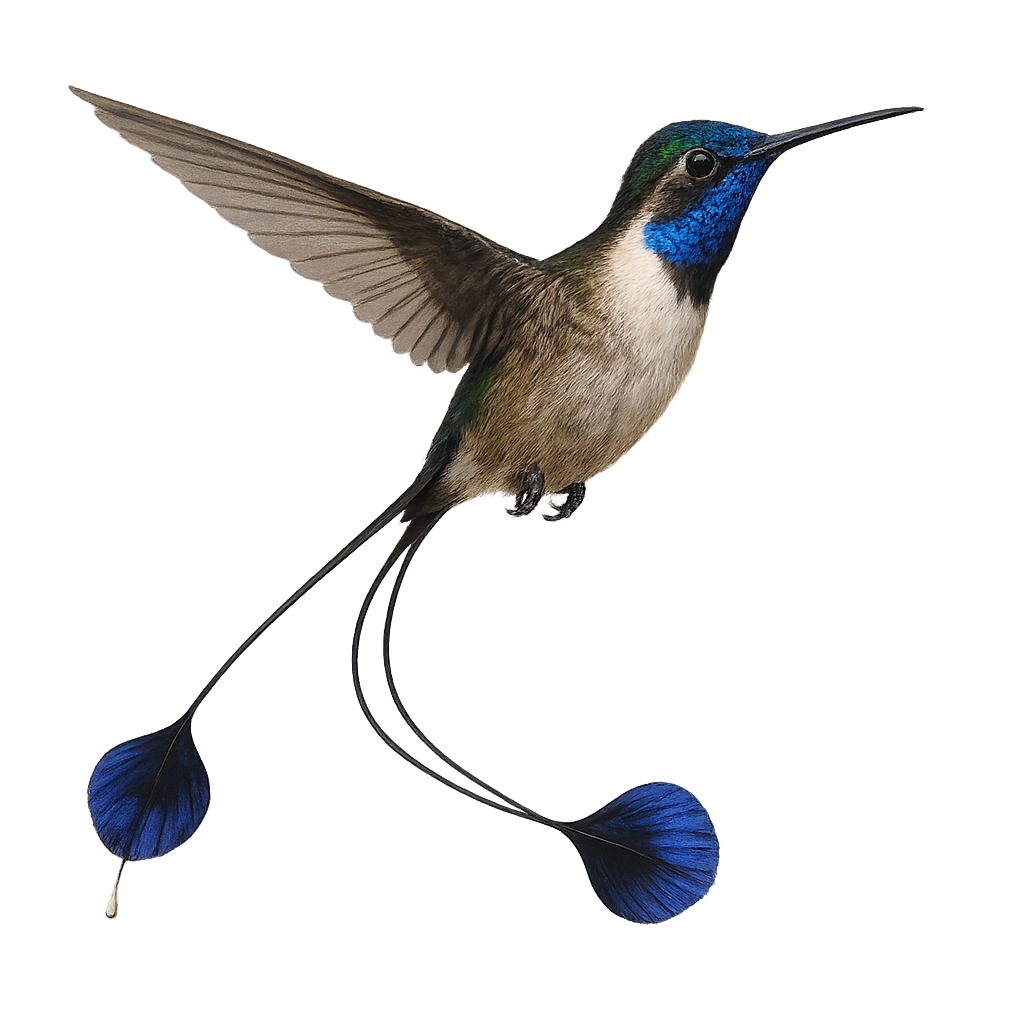Your wildlife photography guide.
Explore the marvelous spatuletail in detail, study its behavior, prepare your shots.
Where to observe and photograph the marvelous spatuletail in the wild
Learn where and when to spot the marvelous spatuletail in the wild, how to identify the species based on distinctive features, and what natural environments it inhabits. The WildlifePhotographer app offers tailored photography tips that reflect the marvelous spatuletail’s behavior, helping you capture better wildlife images. Explore the full species profile for key information including description, habitat, active periods, and approach techniques.
Marvelous Spatuletail
Scientific name: Loddigesia mirabilis

IUCN Status: Endangered
Family: TROCHILIDAE
Group: Birds
Sensitivity to human approach: Suspicious
Minimum approach distance: 5 m
Courtship display: March to April
Incubation: 19-21 jours
Hatchings: March to May
Habitat:
Cloud forests, wooded areas
Activity period :
Primarily active during the day, with peak activity in the morning and late afternoon.
Identification and description:
The Marvelous Spatuletail, or Loddigesia mirabilis, is a fascinating and rare bird endemic to Peru. This hummingbird is famous for its spectacular tail feathers, which end in racket-shaped spatules. Males display vibrant plumage with bright colors, while females are more subdued. They primarily inhabit cloud forests and wooded areas at altitudes between 2100 and 2900 meters. Their diet mainly consists of nectar, which they extract while hovering, and insects. Their behavior is generally suspicious, making them a challenge for birdwatchers and photographers to observe.
Recommended lens:
400 mm – adjust based on distance, desired framing (portrait or habitat), and approach conditions.
Photography tips:
To photograph the Marvelous Spatuletail, patience and discretion are key. Use a telephoto lens of at least 400mm to capture detailed images without disturbing the bird. Choose a spot near the flowers they frequent for feeding, and wait for them to approach. The natural light of morning or afternoon is ideal to highlight the vibrant colors of their plumage. Remain still and quiet to avoid scaring them, and be ready to capture the moment they hover in mid-air.
The WildlifePhotographer App is coming soon!
Be the first to explore the best nature spots, track rutting seasons, log your observations, and observe more wildlife.
Already 1 430 wildlife lovers subscribed worldwide

